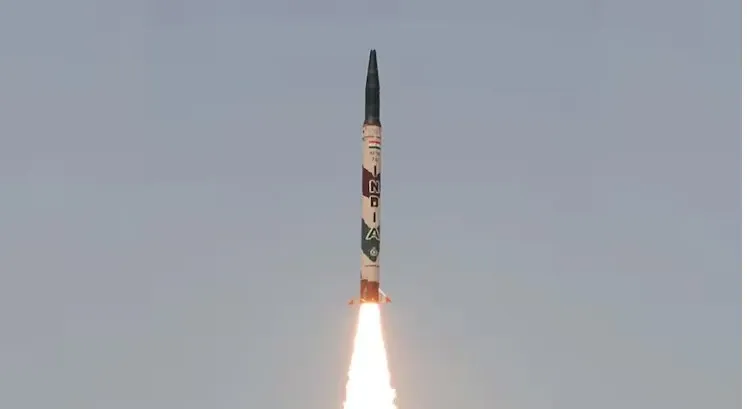Did India Successfully Test the Prithvi-II and Agni-I Ballistic Missiles in Odisha?

Synopsis
Key Takeaways
- Successful test-firing of Prithvi-II and Agni-I missiles
- Conducted from Chandipur, Odisha
- Tests validated India's nuclear-capable delivery systems
- Part of routine Strategic Forces Command exercises
- Enhances overall air defence shield of India
New Delhi, July 17 (NationPress) India successfully conducted the test-firing of two vital strategic missiles on Thursday: the short-range ballistic missile Prithvi-II and the ballistic missile Agni-I, according to officials from the Ministry of Defence.
The test was executed from the Integrated Test Range located in Chandipur, Odisha.
The Ministry of Defence reported that these launches were carried out under the supervision of the Strategic Forces Command as part of standard training and validation exercises.
Both missiles effectively achieved their operational goals and met all technical criteria, as stated by the Ministry.
The Defence Ministry also confirmed that these tests validated essential capabilities, reinforcing the reliability and precision of India's nuclear-capable delivery systems.
These test-firings represent a significant accomplishment in bolstering India's defence capabilities.
The Prithvi and Agni missile systems are integral to India's indigenous missile framework and serve as a robust pillar of the national defence.
Approximately 24 hours before this successful trial, India executed another successful test of the indigenous 'Akash Prime' air defence system on Wednesday.
The Indian Army conducted this test at an altitude of around 15,000 feet in the Ladakh sector.
The Akash Prime system, developed by the Defence Research and Development Organisation (DRDO), was tested in the presence of senior officials from both the Army's Air Defence wing and DRDO.
This test marked a significant progression in India's mission to bolster its self-sufficient defence infrastructure.
During the trial, surface-to-air missiles from the system scored direct hits on two high-speed aerial targets, showcasing remarkable accuracy.
This test was conducted in the challenging conditions of high-altitude terrain, where basic operations can prove difficult.
Defence officials indicated that the Akash Prime system will be integrated into the Indian Army's third and fourth Akash Regiments, thereby enhancing the nation's overall air defence network.
It is noteworthy that India's Akash air defence system played a pivotal role during Operation Sindoor, successfully countering aerial assaults involving Chinese fighter jets and Turkish drones used by Pakistani forces.
Defence analysts argue that this successful trial not only highlights India's indigenous defence capabilities but also significantly enhances the nation's aerial security readiness.





